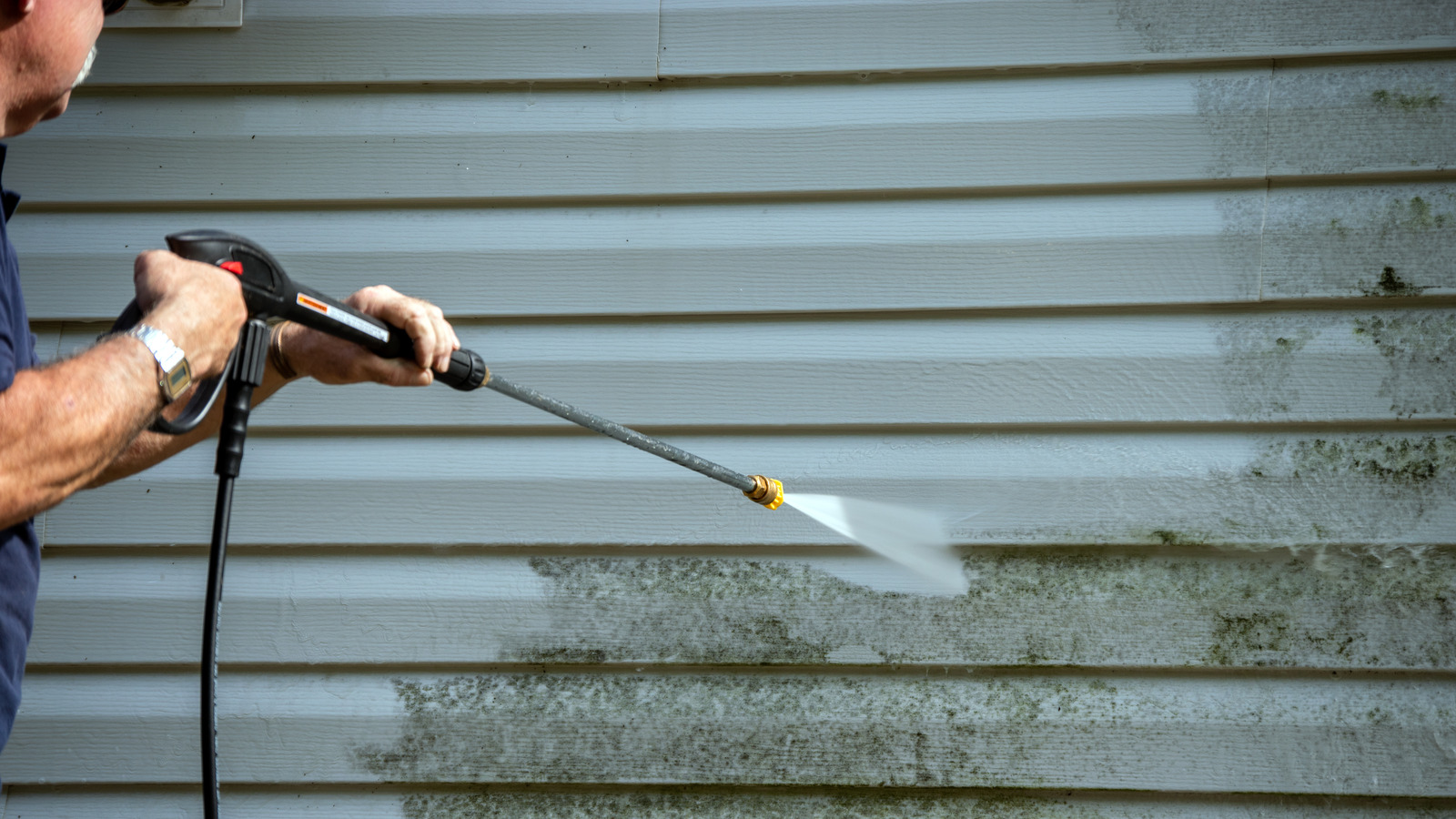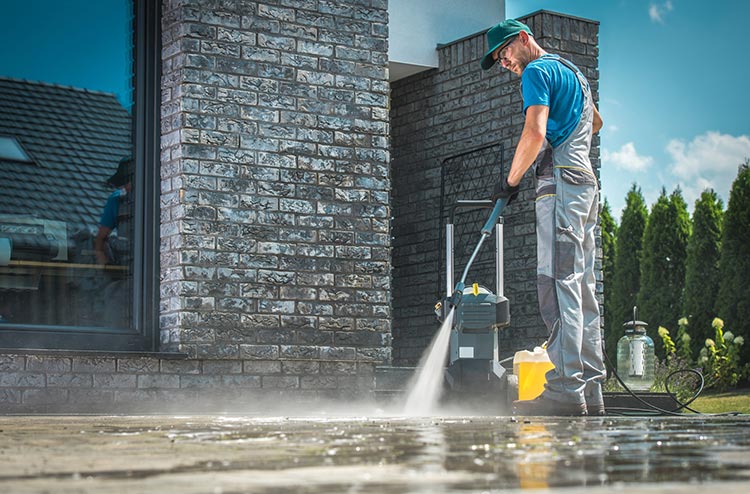Revitalize Your Home: The Ultimate Guide to Pressure Laundering
Pressure washing is an invaluable tool for home owners aiming to bring back the visual appeal and durability of their buildings. To navigate these complexities and accomplish optimum outcomes, it is essential to explore the essential facets of stress washing, including useful recommendations on addressing common spots and guaranteeing safety throughout the process.
Understanding Pressure Washing
Pressure washing is a powerful cleaning method that utilizes high-pressure water spray to remove dirt, grime, mold, and other contaminants from various surfaces. This strategy is specifically reliable on tough surface areas like driveways, pathways, decks, and house siding, where typical cleansing approaches might drop short. By employing customized devices that creates high-pressure streams of water, pressure washing can penetrate deeply into surface areas, effectively dislodging and washing away persistent particles.
The process is not only efficient yet also ecologically pleasant, as it often counts only on water, lowering the requirement for severe chemical cleaners. In addition, stress washing can enhance the visual allure of residential or commercial properties, maintaining their worth and extending the lifespan of surface areas by stopping wear and tear caused by impurities.

Picking the Right Equipment
Choosing the ideal equipment is vital for attaining ideal lead to pressure washing. The very first choice involves selecting in between electrical and gas pressure washers. Electric versions are typically lighter, quieter, and ideal for residential tasks like cleaning up patio areas or vehicles. Gas devices, on the various other hand, offer greater pressure and flow rates, making them suitable for bigger work such as cleaning driveways or exterior siding.
Next, think about the pressure score, measured in pounds per square inch (PSI) For light-duty tasks, a stress washing machine with 1,300 to 1,600 PSI is sufficient, while medium-duty work typically need 1,600 to 2,500 PSI. Heavy-duty tasks might necessitate devices exceeding 2,500 PSI.
Furthermore, the flow rate, gauged in gallons per minute (GPM), affects cleaning up efficiency (Pressure Washing Lockhart). A greater GPM permits for quicker cleaning however may call for extra powerful tools
Techniques for Reliable Cleaning

The strategy of overlapping strokes is vital for even insurance coverage. Additionally, preserving a constant range from the surface area, typically 12 to 18 inches, allows for efficient application without triggering damage.
Making use of the proper nozzle is additionally essential. A wide-angle nozzle is perfect for larger areas, while a narrow nozzle can target stubborn dirt or gunk. Click Here Additionally, utilizing a sweeping movement as opposed to a fixed spray assists to avoid concentrated areas of pressure, which could lead to surface area damages.

Tackling Common Discolorations
When it involves keeping the look of outside surfaces, dealing with common stains successfully is important for lengthening their lifespan and enhancing curb appeal. Various surface areas, consisting of plastic, wood, and concrete, can build up stains from organic materials, oils, and toxic wastes, requiring a targeted method.
For oil discolorations, a mix of degreasers and pressure cleaning can produce excellent outcomes. Use the degreaser to the tarnished area, allowing it to pass through before making use of a stress washer to eliminate the residue. Organic discolorations, such as mildew or algae, often call for a service including bleach or a committed mold and mildew remover, adhered to by pressure cleaning to restore the surface area's original appearance.
Rust spots, generally found on metal surface areas, may require specialized rust eliminators. Apply the item and scrub the area before find stress washing to eliminate any type of sticking around discoloration. It is essential to evaluate any kind of cleaning option on a tiny, inconspicuous location initially to avoid damage.
Safety And Security Tips and Best Practices
Making certain safety while pressure cleaning is extremely important, as the high-pressure water can position substantial threats if not dealt with appropriately. To protect yourself and others, always use ideal personal protective devices (PPE), consisting of safety and security goggles, gloves, and durable footwear. This gear will certainly secure you from flying particles and the potential for injury.
Before starting, examine the pressure washing machine for any kind of leakages or harmed components. Acquaint yourself with the equipment's manual to understand its operation and security functions. Furthermore, make certain the location you are operating in is without obstacles and that any electrical connections are safe from water exposure.
When running the stress washing machine, preserve a risk-free distance from surfaces and avoid aiming the nozzle at people, pets, or fragile objects. Make use of the proper nozzle for the job, as various nozzles create varying spray patterns and pressure levels. Be conscious of your surroundings: protected loose things, watch for electric lines, and prevent working in damp problems that may lead to slips or drops.
Final Thought
To conclude, stress cleaning offers as a crucial tool for homeowners looking for to improve home aesthetic appeals and longevity. By understanding the details of devices selection, reliable cleaning strategies, and typical stain elimination, the potential for renewing one's home comes to be apparent. In addition, adherence to security protocols makes sure a efficient and safe and secure cleaning procedure. Ultimately, the expertise acquired from this overview equips home owners with the required abilities to maintain and raise their residential or commercial property's allure and value successfully.
Pressure washing is a powerful cleansing approach that utilizes high-pressure water spray to remove dirt, gunk, mold and mildew, and various other impurities from numerous surfaces. By employing specific devices that produces high-pressure streams of water, stress cleaning can pass through deeply into surface areas, effectively dislodging and washing away stubborn debris.
Nonetheless, it is essential to understand that pressure washing requires a read this article certain level of skill and knowledge to avoid damaging surfaces. Softer materials like wood or painted surfaces necessitate a lower pressure setting to prevent damages, whereas concrete or block surface areas can hold up against greater stress levels.
Organic stains, such as mildew or algae, frequently require a service including bleach or a devoted mold eliminator, adhered to by stress washing to restore the surface's initial appearance. - Pressure Washing Lockhart